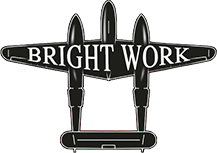When the winter’s over and a new season begins, it's time to think about ways…
The Do’s and Don'ts of Airplane Polishing
Polishing an aircraft may not sound like rocket science, but there are a few things you should know to ensure that you do it correctly. Here are the do’s and don’ts of airplane polishing:
Don’t: Use polish to remove frost
The Federal Aviation Administration used to allow pilots to fly planes that had ice on the wings as long as the ice had been polished and smoothed down. But, the FAA noticed that accidents involving planes with ice on the wings were still occurring even if the ice had been smoothed over. They finally came to the conclusion that any amount of contaminants, including frost, on a plane’s wings can increase the likelihood of accidents. As a result, they issued new rules regarding the removal of frost in 2008.
Under the new rules, pilots can no polish their wings to remove frost prior to taking off. Frost must be completely removed from the wings before taking off. Pilots have a number of options including deicing the plane, placing it inside a heated hangar, using wing covers to prevent the build up of frost, or waiting for the sun to melt the frost.
Do: Use a polish that is aviation approved
Some aircraft owners make the mistake of using polishes that are designed for automobiles on their aircrafts. Even if the label of a car polish says that the product can be used on an aircraft, it’s best to find a polish that is specifically designed for aircrafts. Look for a polish that is aviation approved, which means it has been tested on various aircraft models and is effective in polishing aircraft surfaces. Bright Work polishes are aviation approved and have been tested to Boeing D6-17487, AirBus Aims09-00-002, AMS1650C, Douglas Aircraft CSD #1, and ASTM F 485 standards. If you choose an aviation approved polish like BrightWork, you don’t have to worry about whether you made the right choice to protect your investment.
Don’t: Mix different brands of polish
It’s best that you stick to one brand of polish and use it on your entire plane instead of switching back and forth between different brands. You never know what chemicals are used to create each type of polish, and it’s possible that a chemical in one polish could interact with a chemical found in another polish. In fact, if you mix some polishes together, you may notice brown spots on the surface of your plane that have developed as a result of a chemical reaction. Don’t take any chances that the polishes you use together will interact with each other.
If you want to experiment with different brands of polish to find the one that you like best, do so by testing each polish on a small part of your plane.
Do: Polish in the right weather conditions
It’s important to wait for the right weather conditions before you head outdoors to begin polishing your aircraft. It’s best to polish your aircraft when the humidity is low and the temperature falls between 70 to 85 degrees Fahrenheit. Why? The buffer tool won’t work as well in cold temperatures, and high humidity levels can make the surface of your plane look cloudy even after it has been polished. You should avoid polishing your plane outdoors if it’s windy since the wind can very easily blow tiny pieces of dirt and debris across the surface of your plane. A little sunlight won’t hurt, but try to avoid polishing your plane in direct sunlight so the surface of your aircraft does not become too hot.
It’s important to note that you should reference these ideal weather conditions regardless of whether you are polishing inside or outside of a hangar. If you are polishing inside a hangar, you will still need to ensure that the conditions are suitable for polishing.
If you don’t follow these tips, you may spend a lot of time polishing your plane only to find that you did not get the desired results.
Don’t: Polish the entire plane by hand
You have two options when it comes to polishing your plane: you can either polish it by hand or with an electric buffing tool. There are pros and cons to each of these methods, but it’s strongly recommended that you do not polish the entire plane by hand. Electric buffers are very strong, so they can easily buff out imperfections on your plane. If you polish the plane by hand, you may have to go over the same spot over and over before you start to see a change in its appearance.
Buffing by hand is incredibly time-consuming compared to polishing with the help of an electric buffer. It can also be physically exhausting to exert so much effort, and you may experience aches and pains in your arms and shoulders after polishing your plane by hand.
If you are choosing one method over the other, it’s wise to stick to electric buffing. But, the best option would be to use a combination of both hand and electric buffing. Use a buffing tool on the majority of the plane, and then switch to polishing by hand when you get to a spot that cannot be reached with a buffing tool. Using both methods ensures that every inch of your plane has been properly polished—even the hard to reach spots.
Now that you know the do’s and don’ts of polishing your aircraft, it’s time to buy the ideal polish for your plane, Bright Work Polishes. The Bright Work red, white, and blue polishes can remove oxidation, corrosion, and water spots and add a shiny finish to the surface of your plane. Keep all of these do’s and don’ts in mind as you polish your aircraft with the help of Bright Work Polishes!

This Post Has 0 Comments